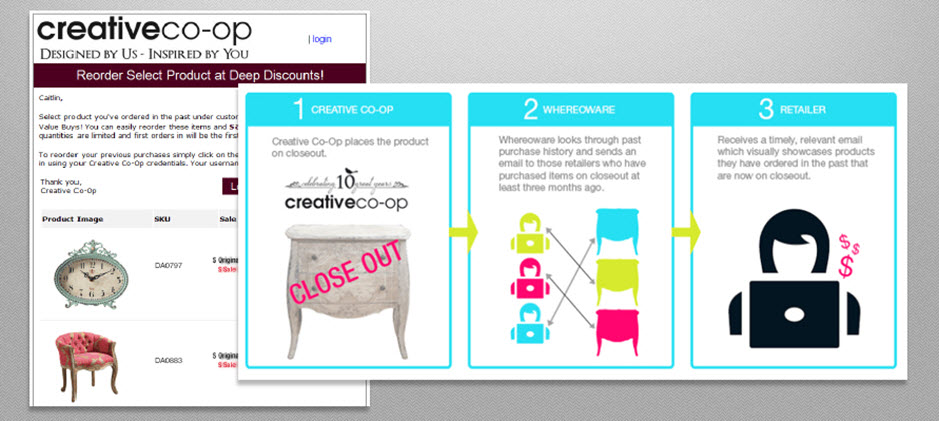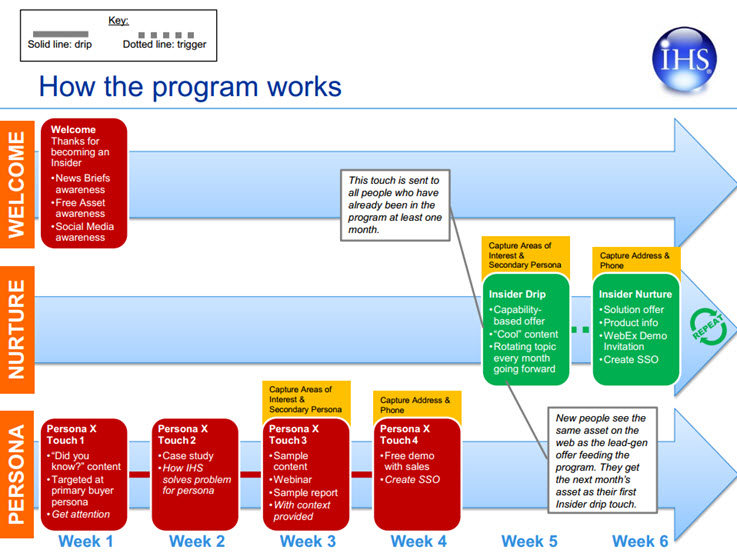“OK, email should be relevant. I get it.
But, how? I’m struggling with where to begin.”
The above quote was a lamentation from an email marketer at MarketingSherpa Email Summit 2011.
 As I had the opportunity to be one of the judges for MarketingSherpa Email Awards 2014, presented by ExactTarget (there’s a picture of us deliberating the entries), I was really impressed with how far marketers have come in a few short years.
As I had the opportunity to be one of the judges for MarketingSherpa Email Awards 2014, presented by ExactTarget (there’s a picture of us deliberating the entries), I was really impressed with how far marketers have come in a few short years.
While I am the first one to scoff at the idea that software solves problems – sometimes I worry it’s oversold as “software is magic” and will cure what ails your company – I must admit the growth of marketing automation is a contributing factor to the leaps and bounds marketers have made in sending emails that are more relevant to customers than ever before.
This is partly because it has given marketers new capabilities and partly because it has also forced them to think in a way that is more customer-focused.
Are you still struggling with delivering relevant emails to your audience?
Well, you should be. It’s hecka hard.
So to get your creative juices flowing, here are three examples from this year’s winners.
Lesson #1. Turn lemons into lemonade (for people who like lemonade)
If you have more than one product or service, you likely have more than one type of customer. To create relevant communications for those customers, you need an understanding of which products are most appealing to them.
A winner in the Connect and Integrate – E-commerce division, Creative Co-Op used data and marketing automation to target closeout products to past purchasers who would find those products relevant.
“The Creative Co-Op campaign uses multiple data sources to create timely and relevant emails. We use individual order history data to send a personalized email when items a customer previously ordered are on sale, in addition to website data to actually showcase those items in the email, linking directly to the product. Putting all their data to work has led to an incredibly effective email campaign,” said Caitlin Kelly, Senior Account Manager, Whereoware, the agency involved in the effort.

The result? This campaign was one of the company’s highest revenue-producing emails, delivering an 808% ROI in the first month alone.
For those cautious of closeout pricing, here is another insight from Caitlin’s Email Awards submission – “Interestingly enough, pushing users to visit the site led to huge sales outside of just closeout items. Customers went to see the deal, and purchased other items while they were visiting.
“Treating these retailers as individuals paid off big for Creative Co-Op, with huge gains in both closeout items and, unexpectedly, non-closeout items.”
When I asked Caitlin her advice about how marketers can deliver more relevant email, her answer contained the triumvirate of elements that comprise a successful automation campaign – data, personalization and triggers …
“Treat customers as individual purchasers with individual interests. Data is key to creating a personalized experience for your customers. Most marketers have data sources for campaigns that they have not considered or tapped into. For example, a marketer may have historical order data, but has not thought about pairing that source with a product file or website behaviors. Combining multiple sources as a trigger for one campaign creates an additional layer of personalization for the email recipient and will likely help increase conversions.”
Lesson #2. Guide people from where they are to where you want them to be
Content marketing is all the rage and for good reason. Providing value and education to potential customers produces good customers.
But good content, itself, isn’t enough.
You need a strategy to provide relevant content. That’s important because as prospects grow in your content and lead nurturing program, what was once relevant to them no longer is – the distance from brilliance to also-ran in content marketing is shorter than the distance between pop stardom and washed-up lounge singer.
That’s what makes content marketing so hard. The first time we teach you something, you think we’re brilliant. But the second time you hear that piece of information, we’re redundant hacks.
IHS, the Best in Show for Lead Gen, actually killed the newsletter for its Jane’s Defence product. The newsletter is typically a cornerstone of content marketing, but IHS switched to a focused path of content for its target audience – members of militaries, governments and intelligence services, as well as global aerospace and defense industry companies.
I’ll let Byron O’Dell, Senior Director, Demand Management, Corporate Marketing, IHS, explain …
“IHS used email marketing and marketing automation along with good content marketing principles to transform the way we engaged with this hard-to-reach segment. We transitioned from a monthly broad-based batch newsletter into a targeted lead generating engine allowing contacts to opt in based on their interests and customizing messaging and offers based on their actions.”
Here’s a high-level look at the program …

As a result, IHS has seen 10 times more engagement than what the previous program produced.
“Executing these sophisticated marketing automation/content marketing projects are tough,” O’Dell said in his entry. “The first, most critical step was to define our team, and together, step back and review our current process.”
Read more…












